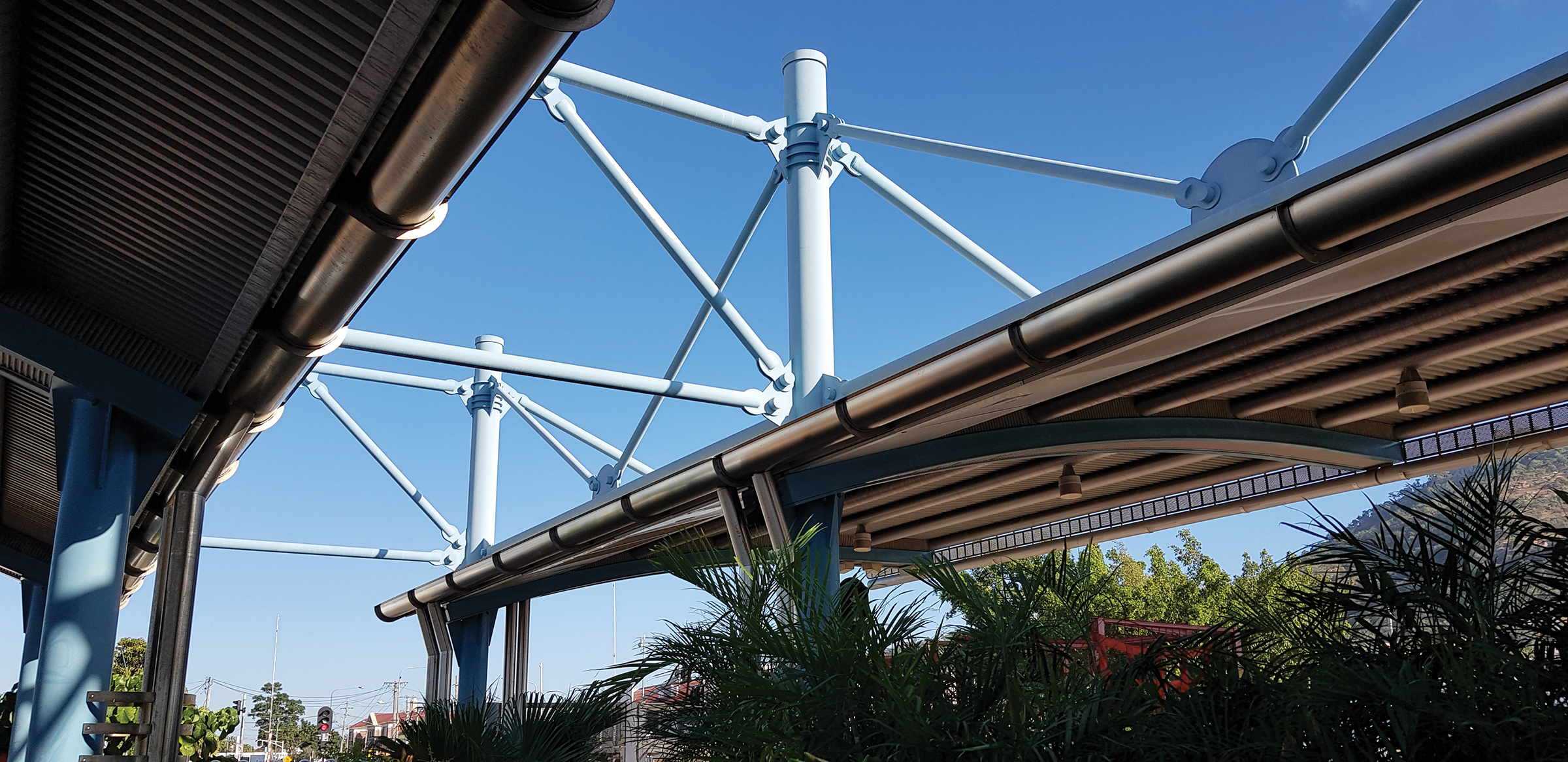Painting for enhanced durability
Hot dip galvanizing is inherently very durable, so there will rarely be a need to paint over it to achieve the intended service life.
Indeed, in higher corrosivity zones (C3 to C5) painting hot dip galvanized steel can actually accelerate corrosion of the zinc substrate and reduce the overall service life of the article from the expected hot dip galvanized-only life unless a judiciously selected, uniformly applied, high build paint system is applied and the integrity of that paint system is maintained through its service life.
Nevertheless, in circumstances where the hot dip galvanized coating is slowly being attacked by a corrosive environment, the application of a suitable coating which insulates the zinc from that environment can prolong the life of the hot dip galvanized coating. Therefore, in severe coastal and industrial service environments (such as shown in Figure 3); the painting of hot dip galvanizing can significantly extend service life. Even in quite benign outdoor service conditions where hot dip galvanizing might last for many decades, it can be prudent to paint areas which are sheltered from the cleansing influence of rain to extend the service life of the structure even further.
The paint systems detailed under Service Requirements 3 to 5 are essentially paint systems intended to provide enhanced durability performance, resistance to wear and trafficking and more aggressive atmospheric service conditions. The paints range from two-pack epoxies and polyurethanes to powder coatings. Most paints have specific restrictions for how they are to be applied and cured and these restrictions need to be strictly enforced. For example, below about 8°C, latex paints will not usually dry and many two-pack coatings have a limited recoating time. Powder coatings, because they are hard cured as soon as they are stoved, can offer logistical benefits. In addition, because they can be applied electrostatically, more uniform coverage can be achieved with intricate shapes than is possible with conventional paints. However, judicious selection of pretreatment and application by competent operators is critical
to performance.
For effective duplex coatings the thickness of the paint system must be increased as the environment becomes more corrosive. For painting in a high corrosivity locale where the coating thickness and integrity is difficult to guarantee, hot dip galvanizing may need to be avoided and an alternative corrosion protection system sought.
The selection of a suitable corrosion inhibitive primer is another prerequisite. Indeed, many failures of duplex coatings can be traced to either an inappropriate primer or an inadequate total paint thickness.
The paint systems detailed under Service Requirements 3 to 5 also provide options for situations where an aesthetic finish is also needed.
For effective duplex coatings the thickness of the paint system must be increased as the environment becomes more corrosive.




